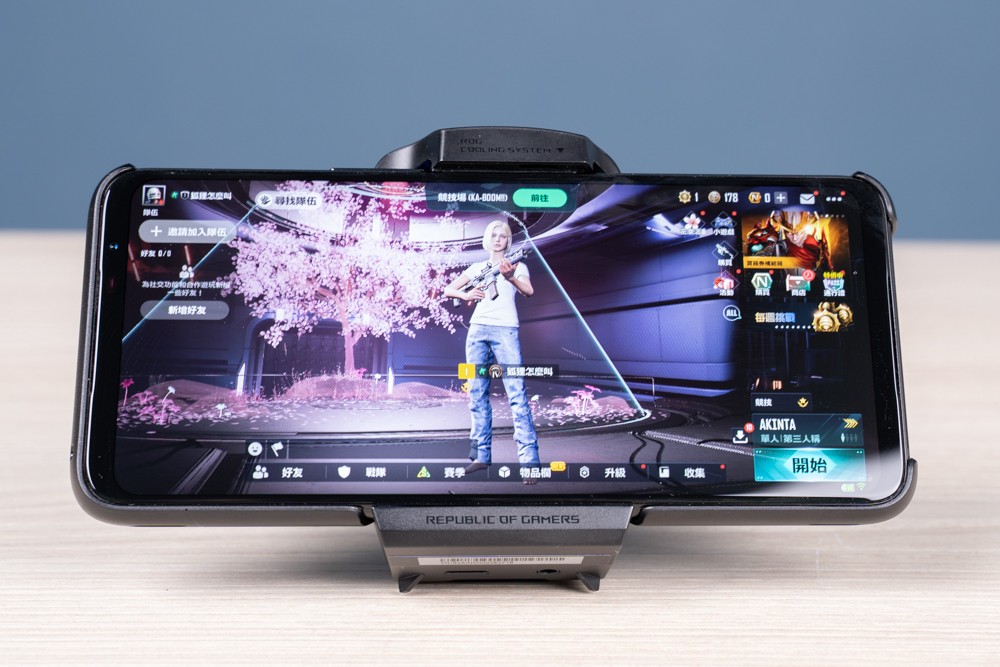
Created specifically for gaming enthusiasts, the ROG Phone 7 and 7 Ultimate come with Qualcomm’s top-of-the-line Snapdragon 8 Gen 2 processor, paired with an enhanced aerodynamic cooling fan for the most powerful performance and heat management. Fear not about overheating or limited gaming potential, as the 6.78-inch display features a 165Hz high-refresh-rate screen and dual front-facing speakers. Let’s explore the unparalleled gaming and multimedia experiences offered by the ROG Phone!
Specification
Model: AI2205_D
Processor: 3.2GHz Qualcomm Snapdragon 8 Gen 2
Graphics processor: Adreno 740
OS: Android 13 ROG UI
Memory / storage space: 16GB RAM LPDDR5X 8533Hz / UFS4.0 512GB
Screen: 6.78-inch 20.4:9 Samsung E4 AMOLED 2448×1080 (395ppi) screen, 165Hz frame refresh rate, 720Hz touch sampling rate, 1ms response time, 1500nits, 111.23% DCI-P3, HDR10+.
Rear Camera: 50MP IMX766 Quad Bayer, 13MP Ultra Wide, 8MP Macro
Front camera: 32MP OV32C Quad Bayer
Sound: Dirac Virtuo™ spatial audio (headphones), stereo dual-speaker Cirrus Logic amplifier, 3.5mm headphone jack
Dustproof and waterproof: IP54
Wireless: Wi-Fi 7 (802.11a/b/g/n/ac/b/g/n 2.4+5GHz+6GHz), 2×2 MIMO, Bluetooth 5.3, NFC
Sensor : Accelerator, E-Compass, Proximity, Ambient light sensor, in-display fingerprint sensor,
Gyro, Hall sensor, Ultrasonic sensors for AirTrigger system for grip/press detection
SIM: dual card dual standby, 5G/5G Nano SIM
Battery: 6000mAh
Charging: 65W (21V 3A) PD3.0 / QC5.0 / Direct Charge adapter
Dimensions: 173 x 77 x 10.3 mm
Weight: 239g
Accessories: mobile phone case, aerodynamic fan7
Aurora white color X phantom screen, ROG Phone 7 Ultimate out of the box
The sole distinction between the ROG Phone 7 and the ROG Phone 7 Ultimate lies in their back panels. The Ultimate version features a small OLED screen on the back, while the standard ROG Phone 7 sports an RGB ROG design. Additionally, the Ultimate model includes an aerodynamic valve and comes standard with the Aerodynamic Fan 7, which directs air into the phone’s internal heatsink for cooling (the ROG Phone 7 can also be equipped with a fan). The Ultimate is available exclusively in Aurora White, while the ROG Phone 7 offers both Phantom Black and Aurora White options. The Ultimate comes with a 16GB/512GB configuration, while the ROG Phone 7 provides a smaller capacity choice. The remaining hardware remains identical for both models. For this particular test, the ROG Phone 7 Ultimate is being used.
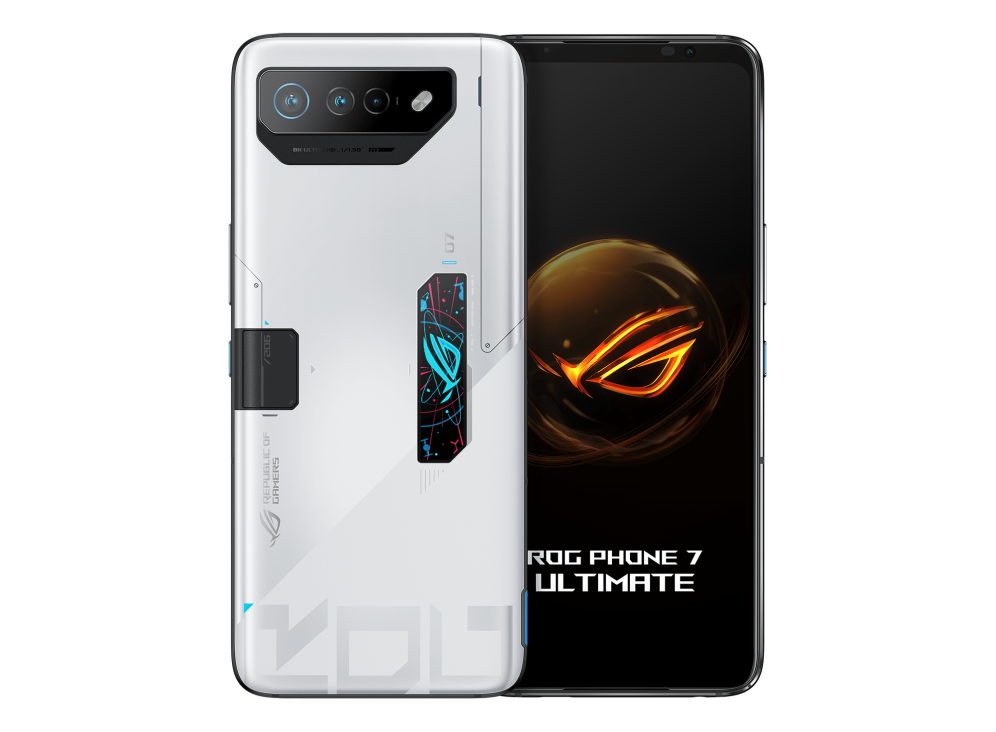
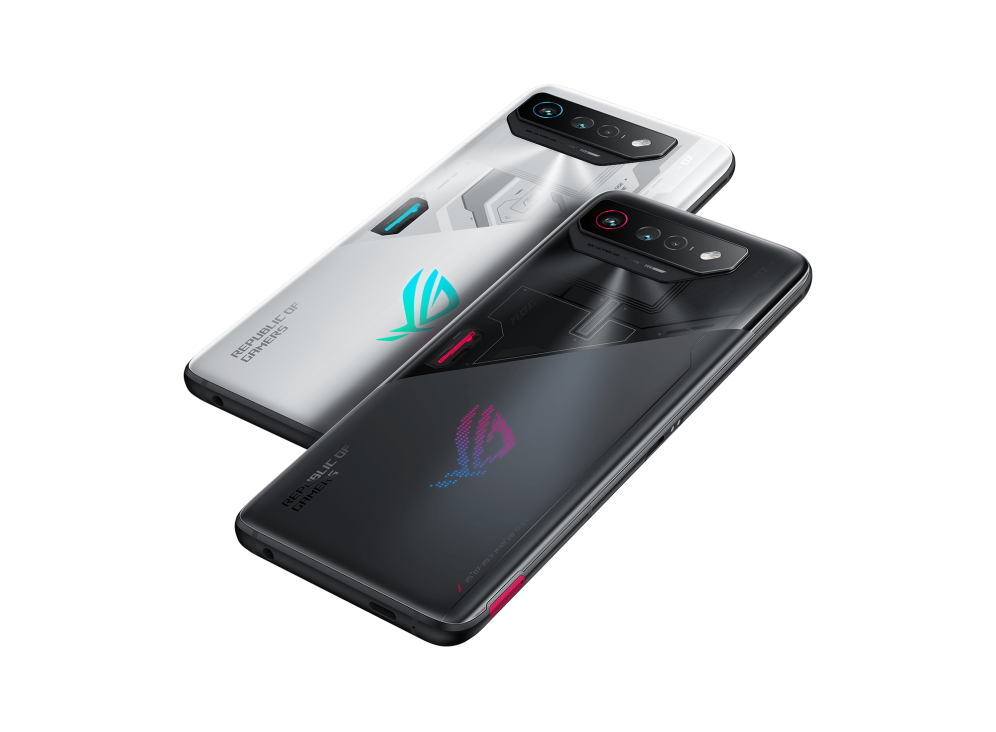
At first sight, the triangular onigiri-style packaging of the ROG Phone 7 Ultimate may appear unusual, but it is crafted from 100% recycled and bio-based materials, contributing to a greener planet.
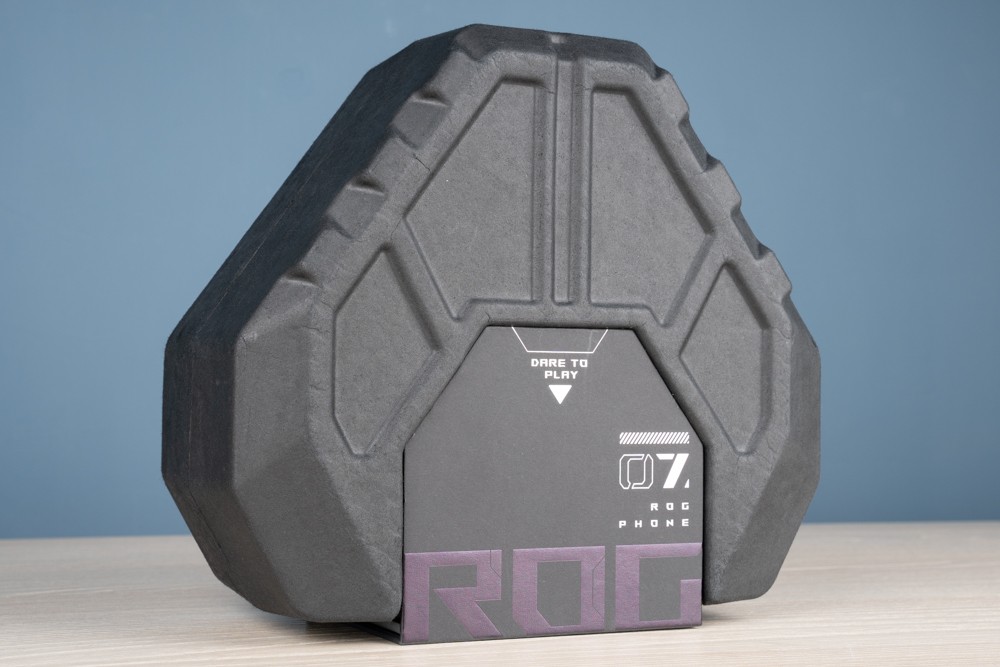
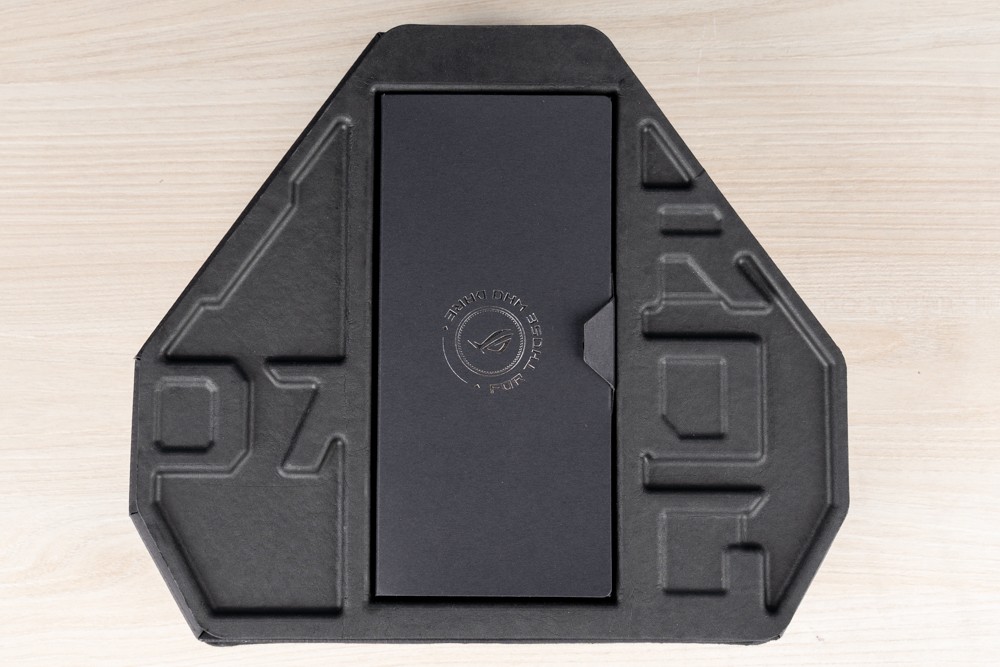
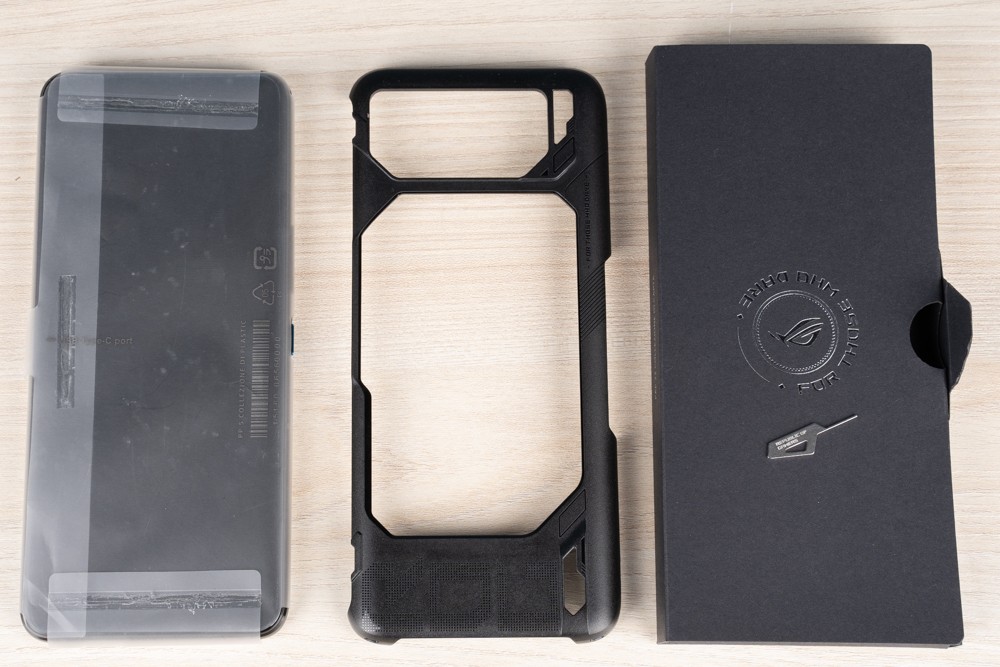
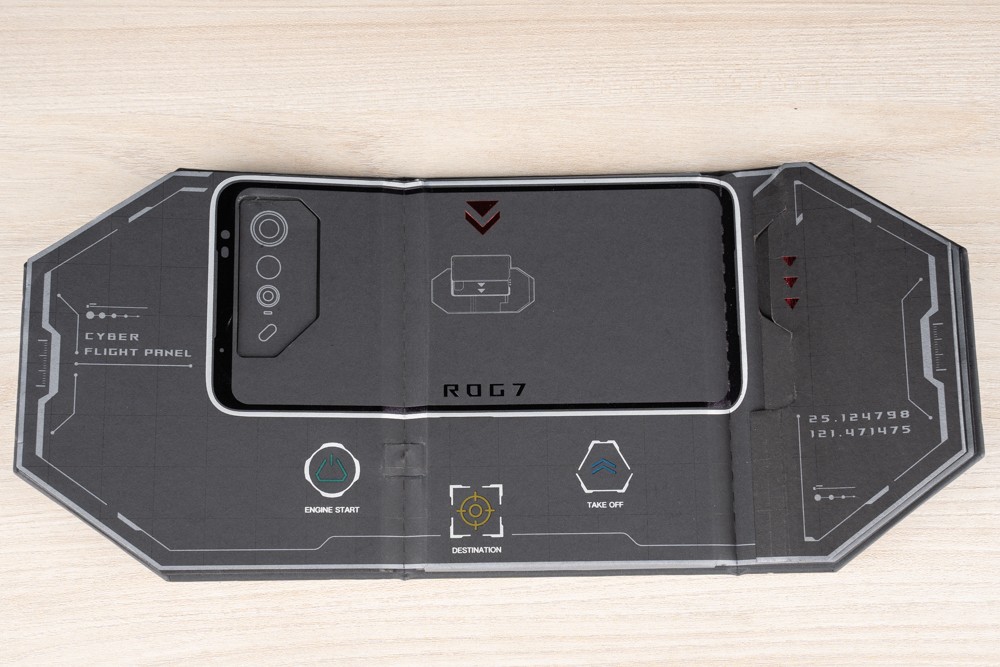
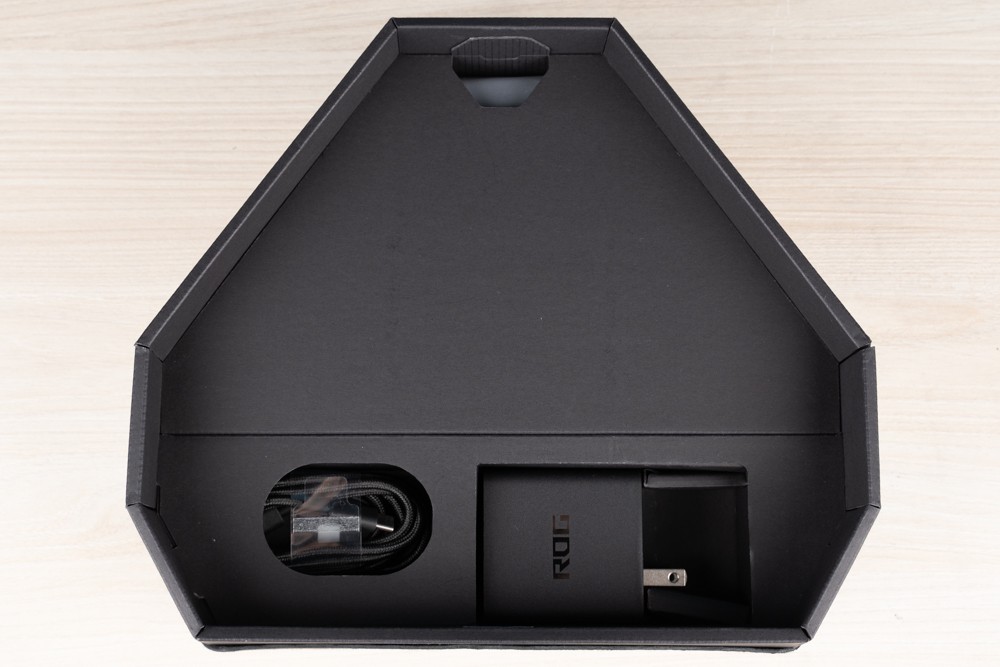
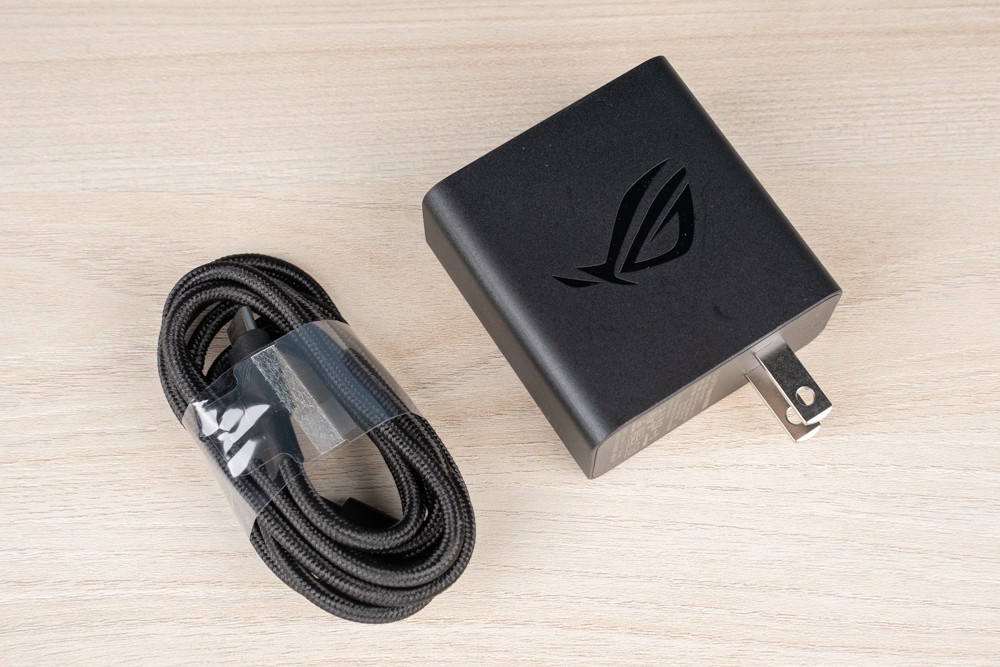
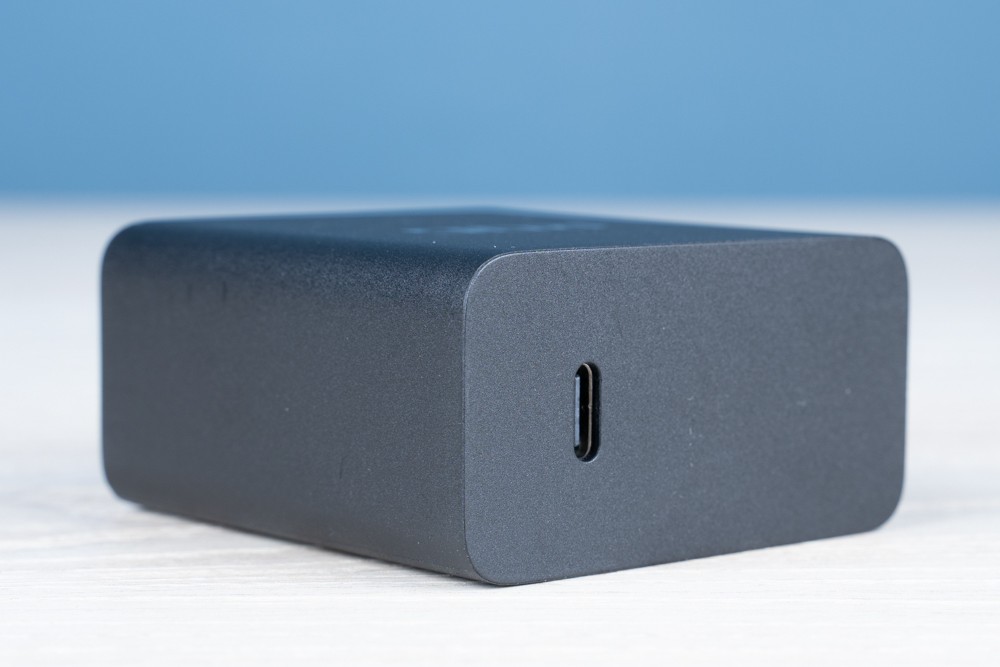
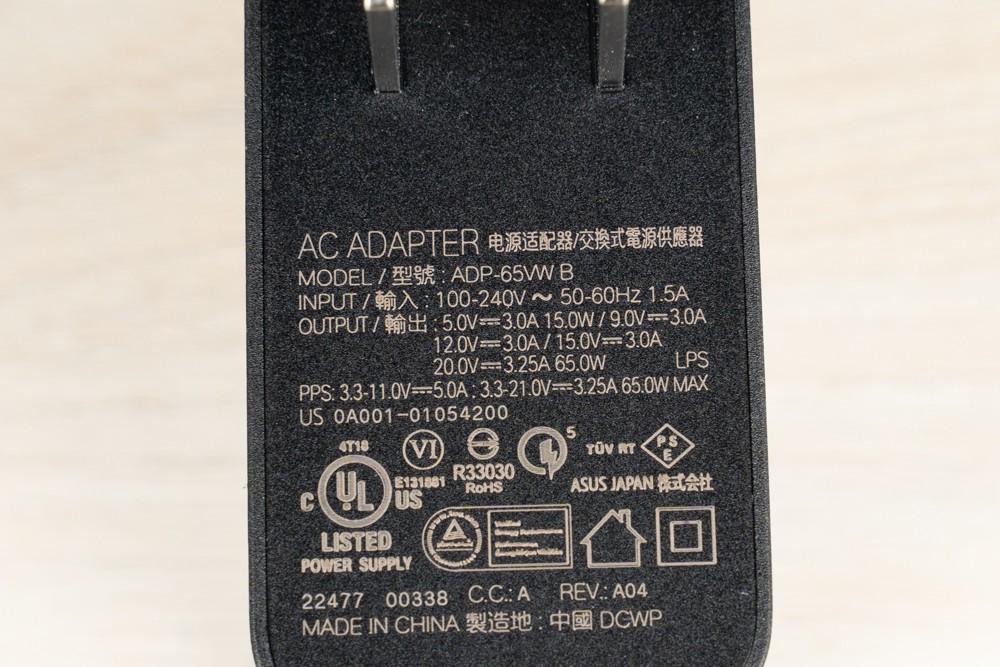
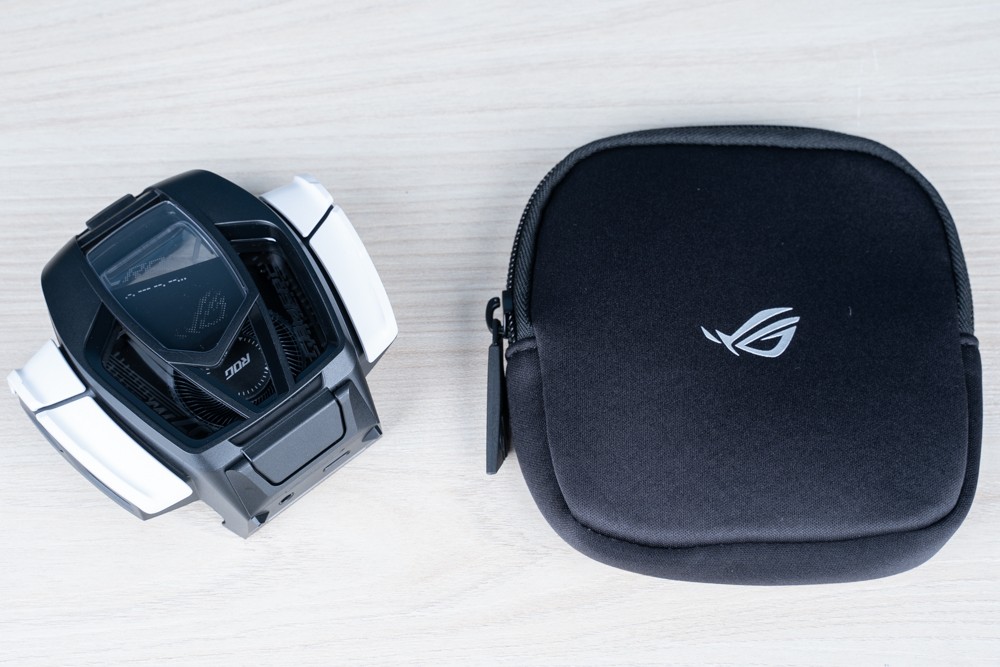
Besides performance, the screen is the most crucial factor influencing gaming experience. The ROG Phone 7 Ultimate features a flat design on the front to prevent unintended touches on curved screens while gaming. Boasting a 6.78-inch Samsung E4 AMOLED display with a 2448×1080 resolution and a 165Hz refresh rate, it also offers a 720Hz touch sampling rate, a 1ms delay, a maximum brightness of 1500 nits, 111% DCI-P3 coverage, and 150% sRGB. In summary, this top-tier screen is specifically crafted for an outstanding gaming experience.
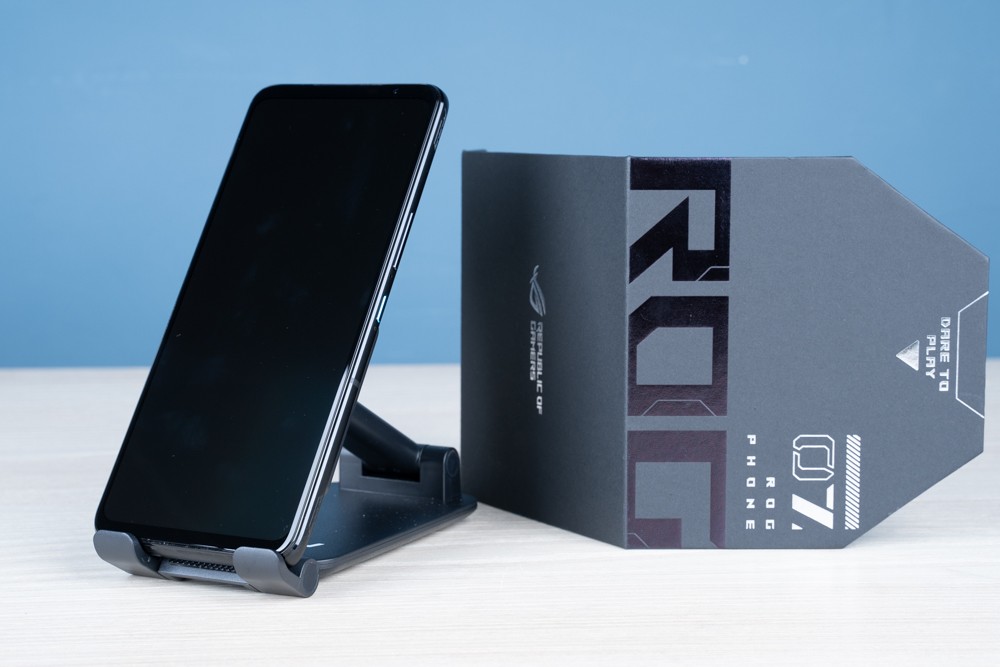
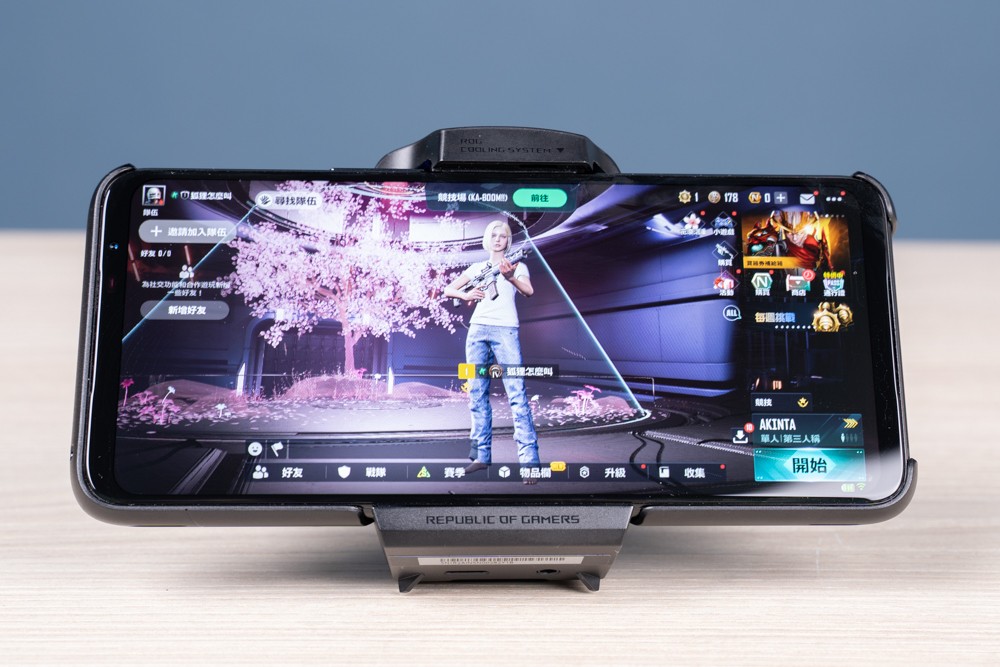
The rear of the ROG Phone 7 Ultimate is composed of Corning’s third-generation Gorilla Glass, featuring a frosted texture that resists fingerprint smudges. The phone’s edges are crafted from black matte metal, and despite the device’s large size, the curved edges ensure a comfortable grip.
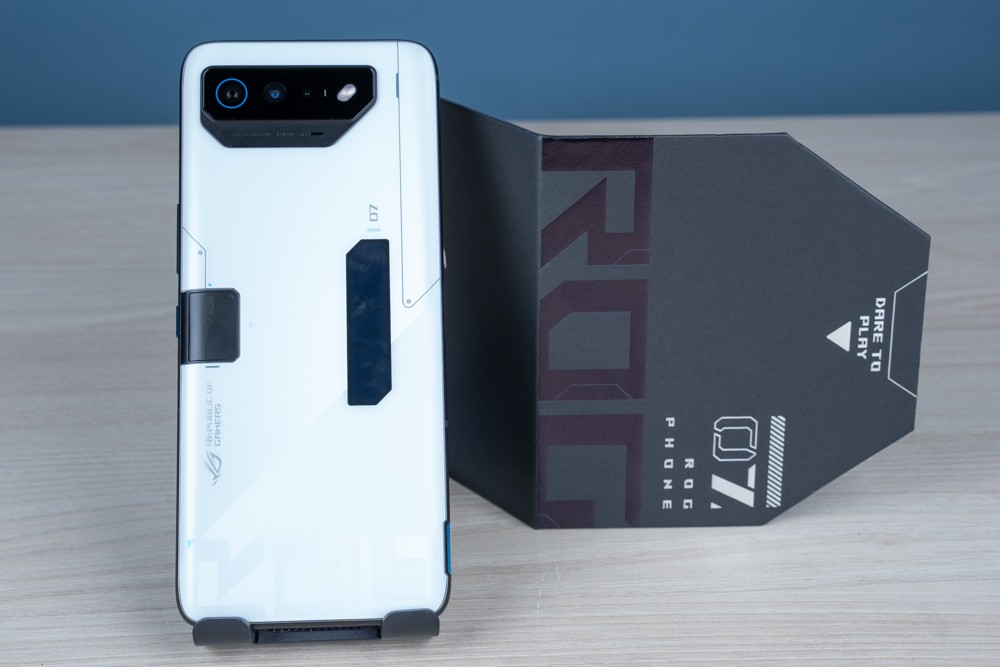
The rear phantom screen resembles that of the previous generation. Within the Armory Crate, there are six display modes available, allowing users to customize the screen creatively according to their preferences.
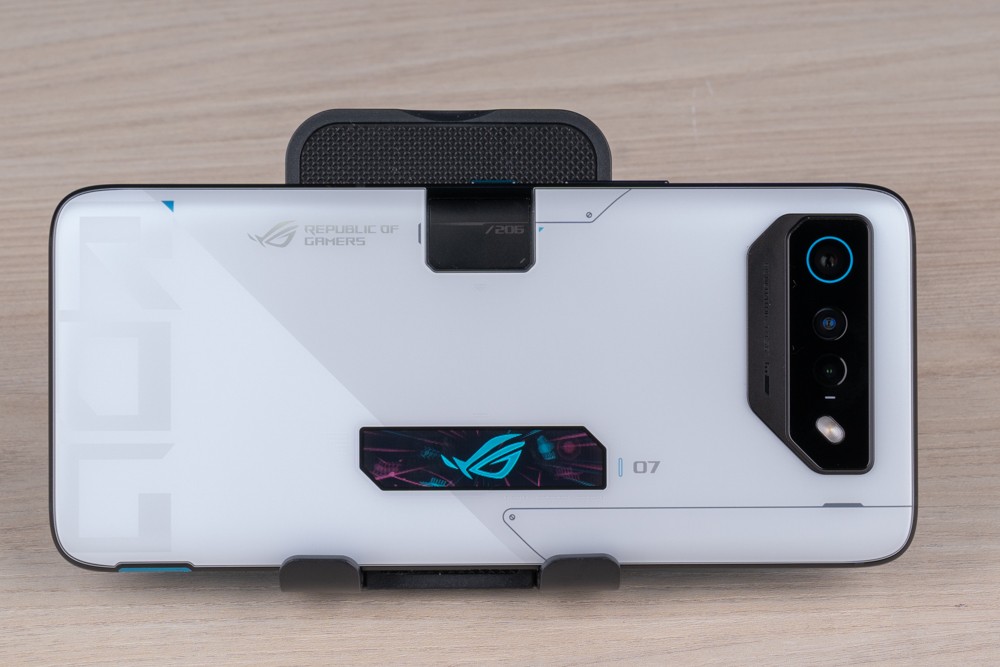
The ROG Phone 7 Ultimate is equipped with three sets of microphones, located at the top, bottom, and right side of the frame. Apart from the microphone, no other connectors are present on the top edge of the device.
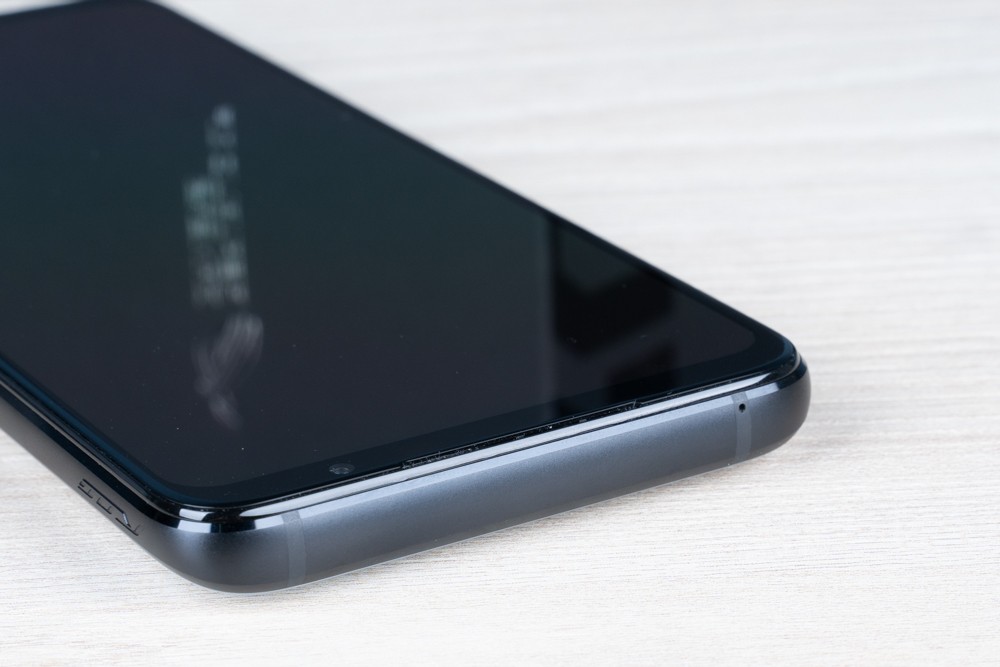
On the right side of the device, the letters “ROG” are engraved, coinciding with the location of the AirTrigger. Both the volume and power buttons are situated on this side as well. The power button features a blue border, which complements the storm white color scheme.
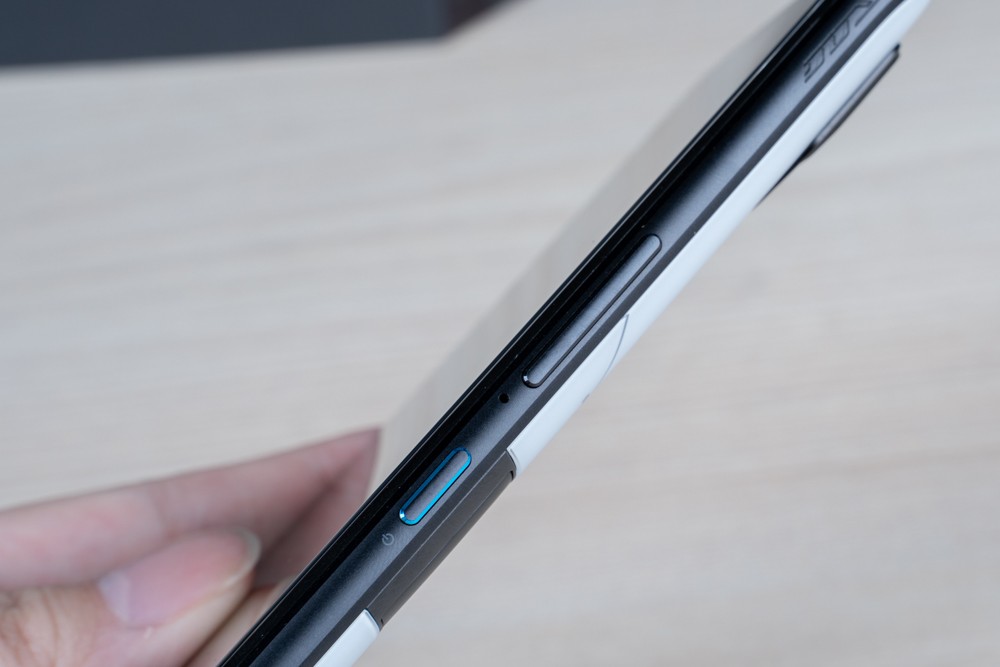
At the bottom of the device, you’ll find a highly sophisticated 3.5mm headphone jack and a Type-C interface, which supports USB 2.0, QC 3.0, PD 3.0, and HyperCharge technology (requires the use of the included charger).
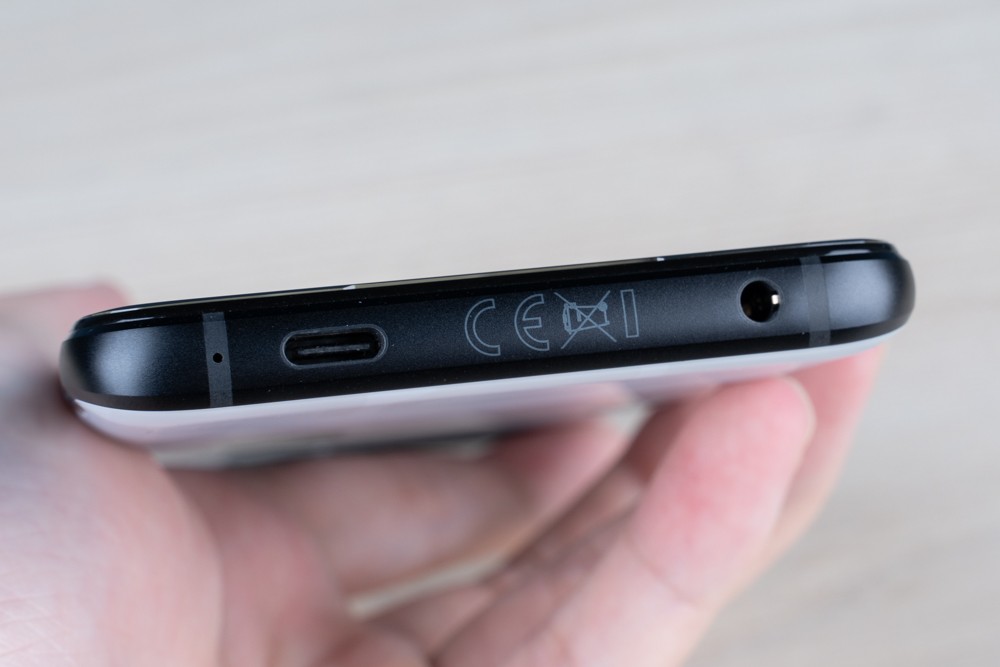
The primary Type-C port of the ROG Phone 7 Ultimate is located on the left side of the device, supporting USB 3.1 Gen 2, DP 1.4, QC 5.0, PD 3.0, and HyperCharge (requires the use of the included charger). The blue component is the SIM card slot, which supports 5G dual-SIM dual-standby functionality but does not offer memory card expansion capabilities.
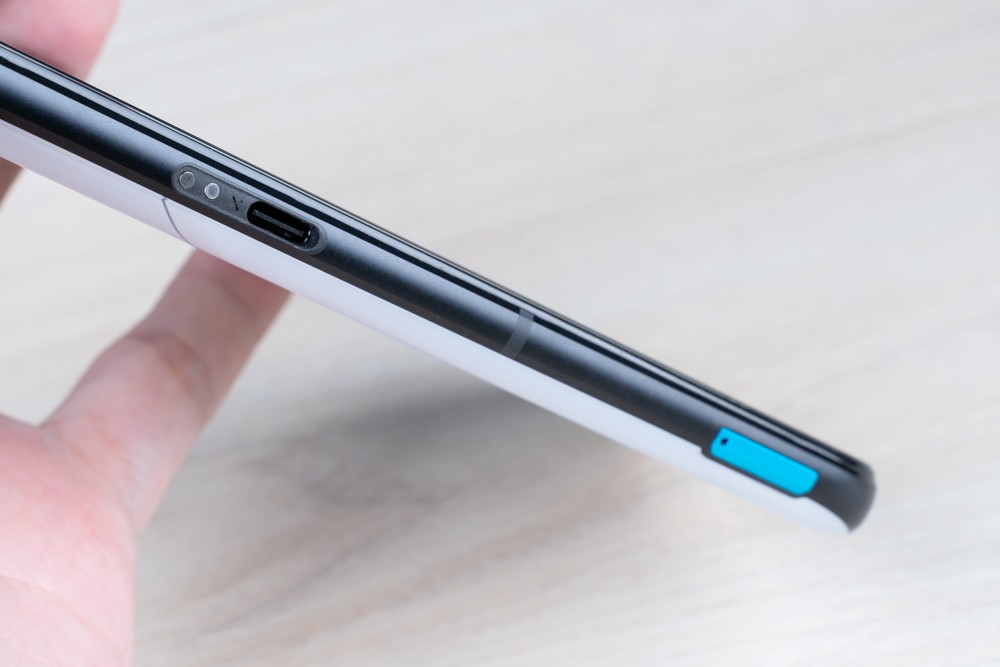
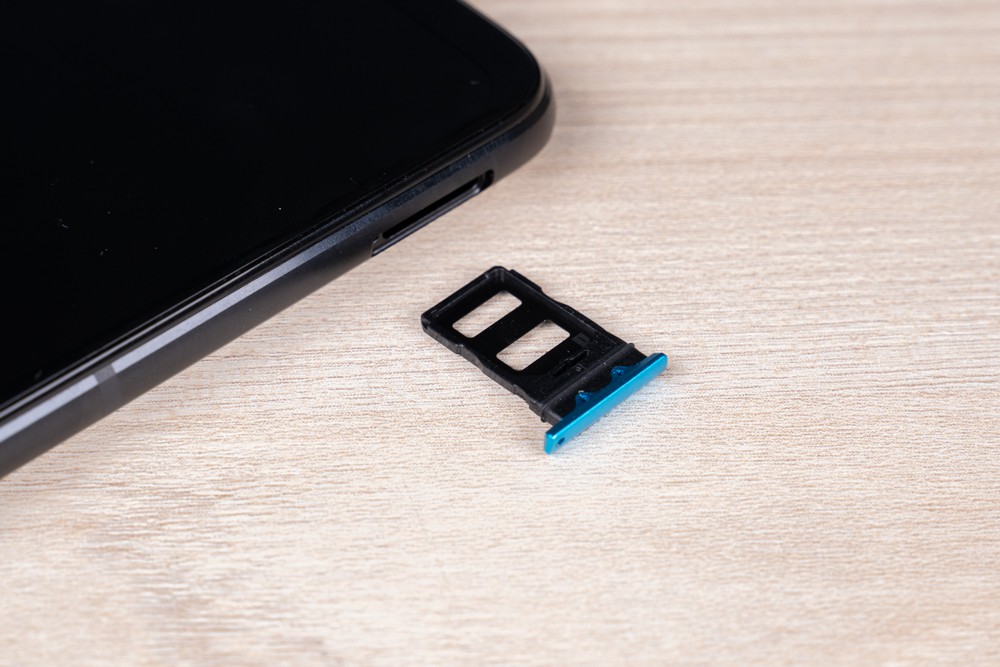
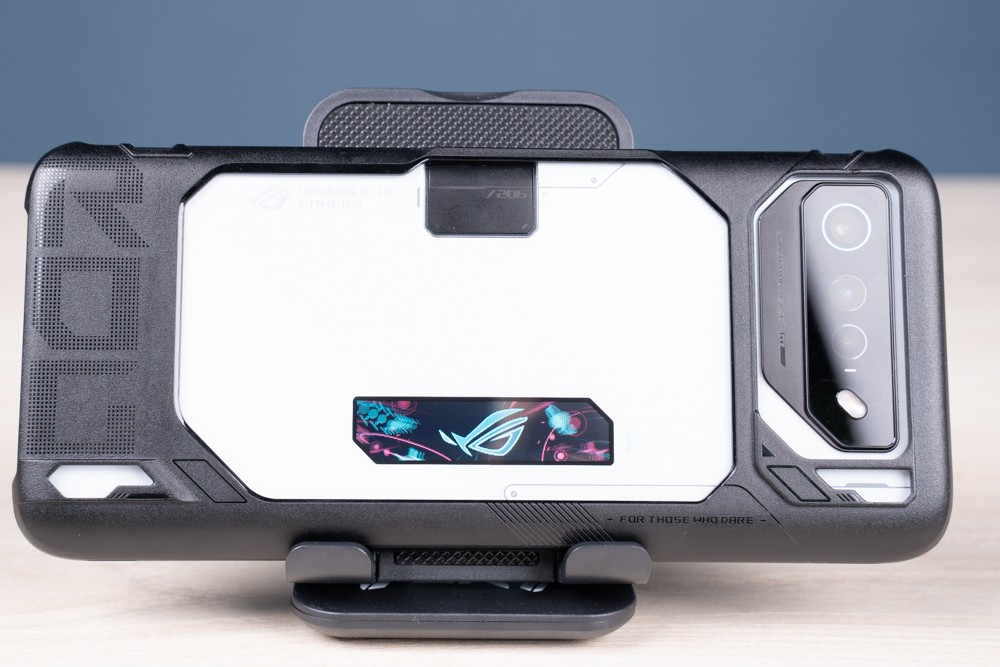
Qualcomm 8 Gen 2 performance monster, aerodynamic fan 7 extreme heat dissipation
As a gaming phone, the ROG Phone 7 Ultimate is naturally equipped with the most potent Android processor, the Qualcomm Snapdragon 8 Gen 2. Manufactured using TSMC’s second-generation 4nm process, the processor consists of a 3.2GHz X3 super large core, four 2.8GHz large cores, and three 2.0GHz small cores. This configuration significantly improves the energy consumption ratio. However, the most notable enhancement lies in the GPU; the Adreno 740 performance has increased by 20% compared to its predecessor, which is truly impressive.
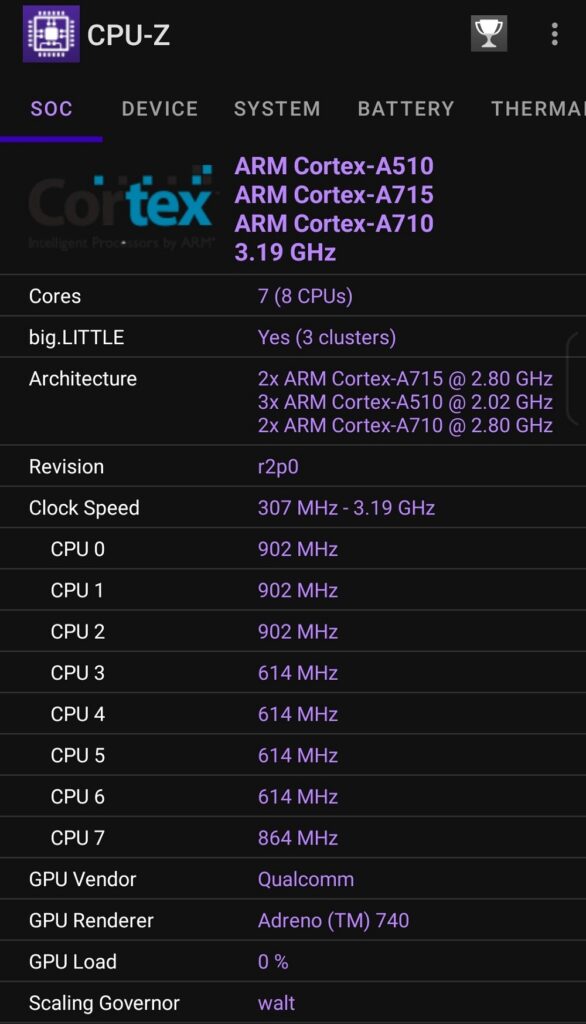
To ensure that the SOC can deliver its full potential, the internal design of the ROG Phone 7 has prioritized heat dissipation from the outset. The SOC is positioned between the two batteries, as close to the center as possible, and is equipped with a large vapor chamber and graphene components. This design not only enables the aerodynamic fan to more effectively dissipate heat but also avoids interference with areas where the phone is held with both hands during landscape gaming. To achieve optimal cooling performance, the vapor chamber is fitted with six heat pipes and Y-shaped protrusions that enhance heat exchange. It is remarkable how such an intricate cooling system has been incorporated within the limited space of a smartphone.
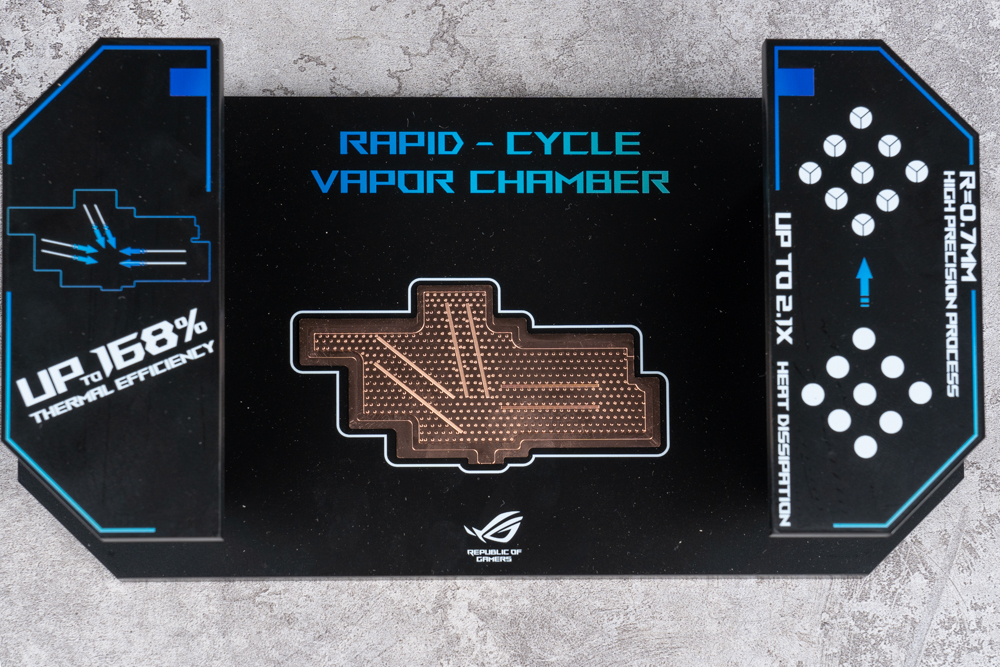
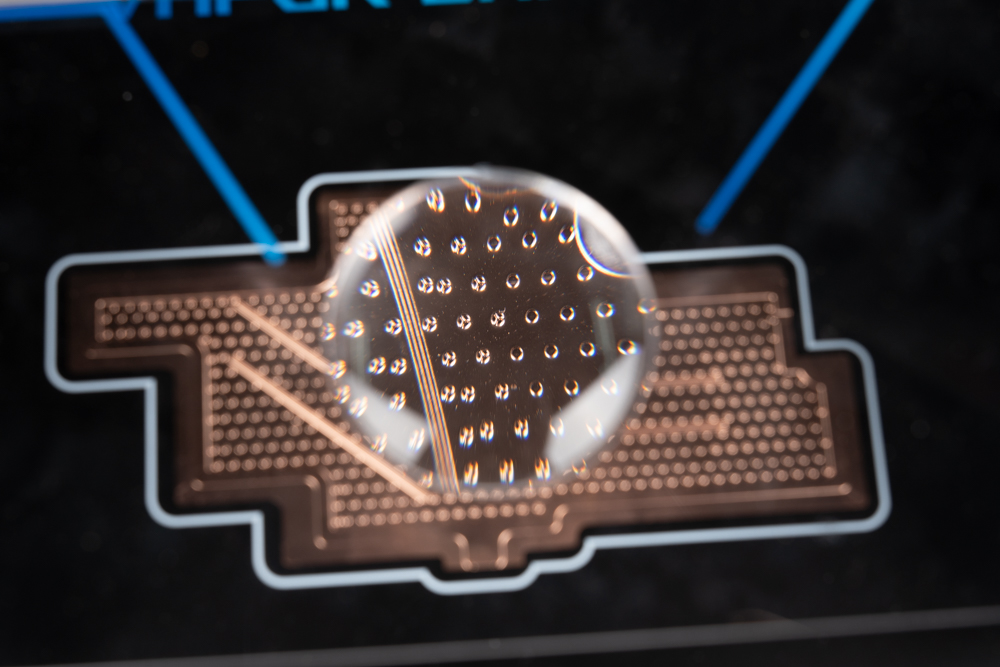
The Aerodynamic Fan 7 has been upgraded as well. Upon installation, it automatically opens the aerodynamic valve on the back panel of the phone, allowing air to flow into the device’s interior. The valve only opens when the fan is operating. However, the device only offers basic IP54 water resistance. There are three fan strategies to choose from: smart adjustment, which adjusts the speed based on temperature; air-cooled mode, which runs the fan at full speed; and extreme cold mode, which activates the cooling function. The bottom of the device features a Type-C port and a headphone jack, ensuring that wires don’t obstruct the grip when held horizontally. The built-in subwoofer pairs with the front dual speakers to form a 2.1 channel audio setup. Furthermore, the phone includes four physical buttons for gaming convenience. RGB lighting effects are also customizable, with options to set up various scenes within the system.
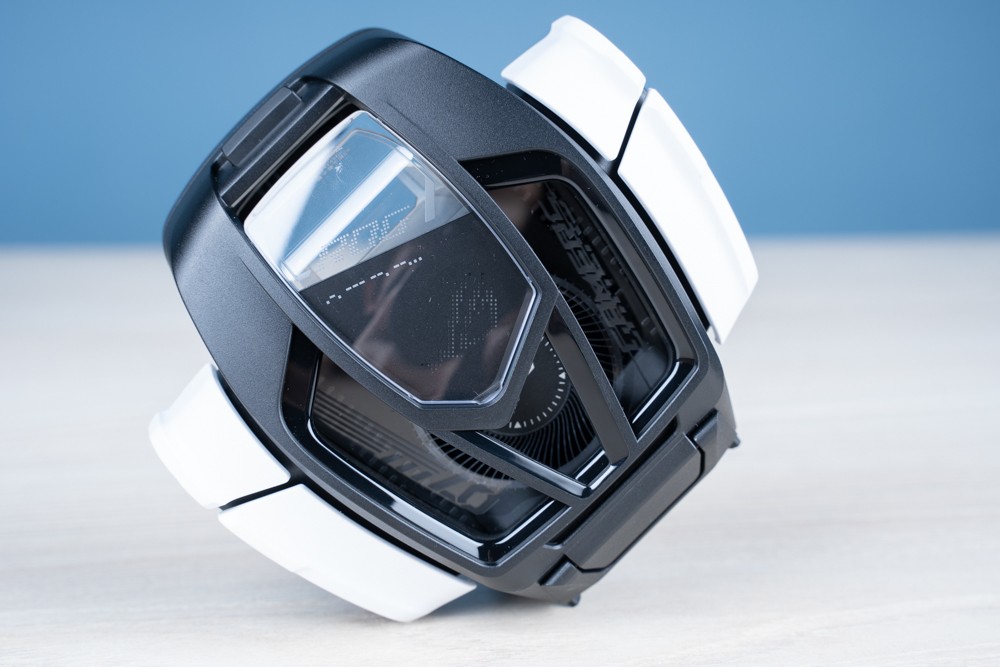
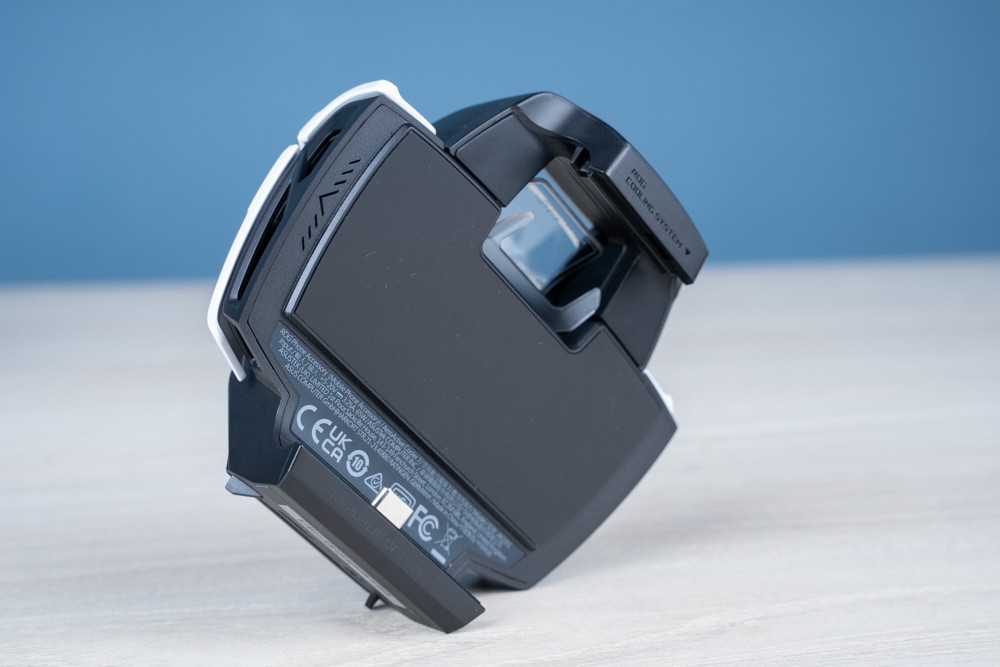
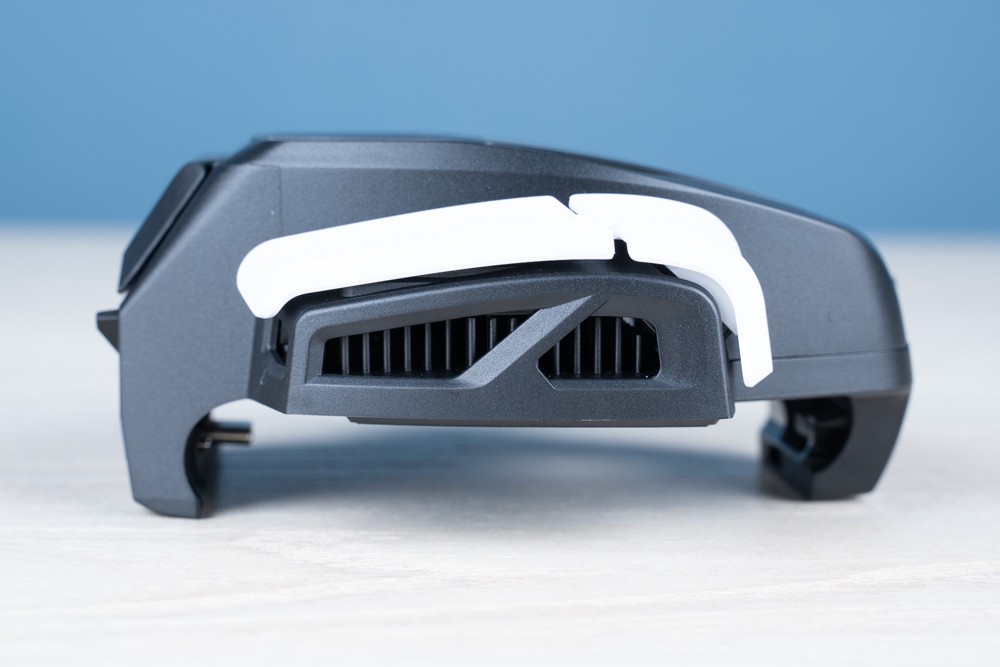
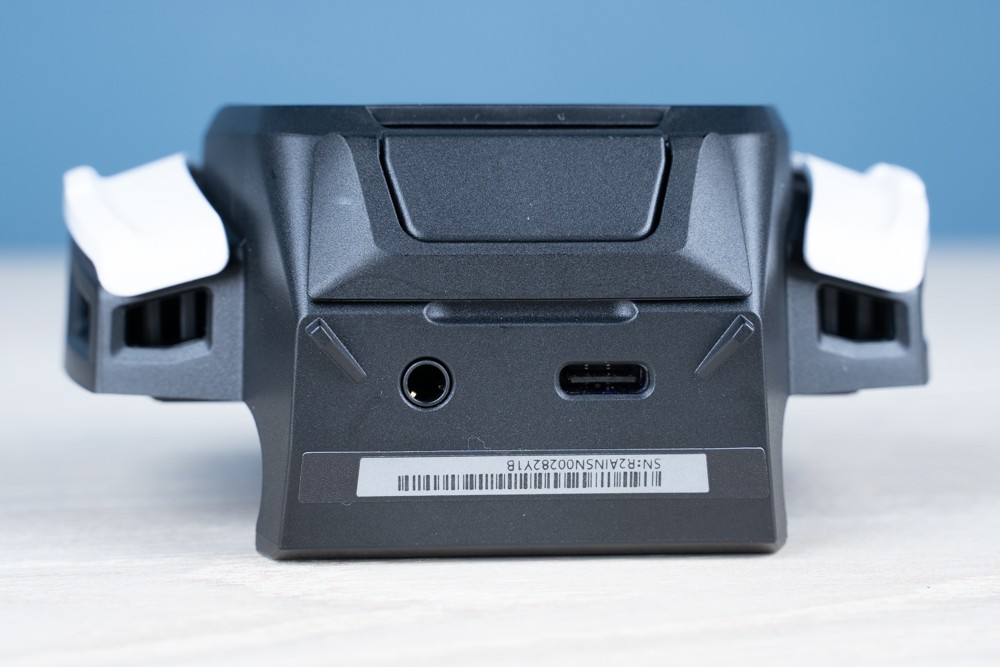
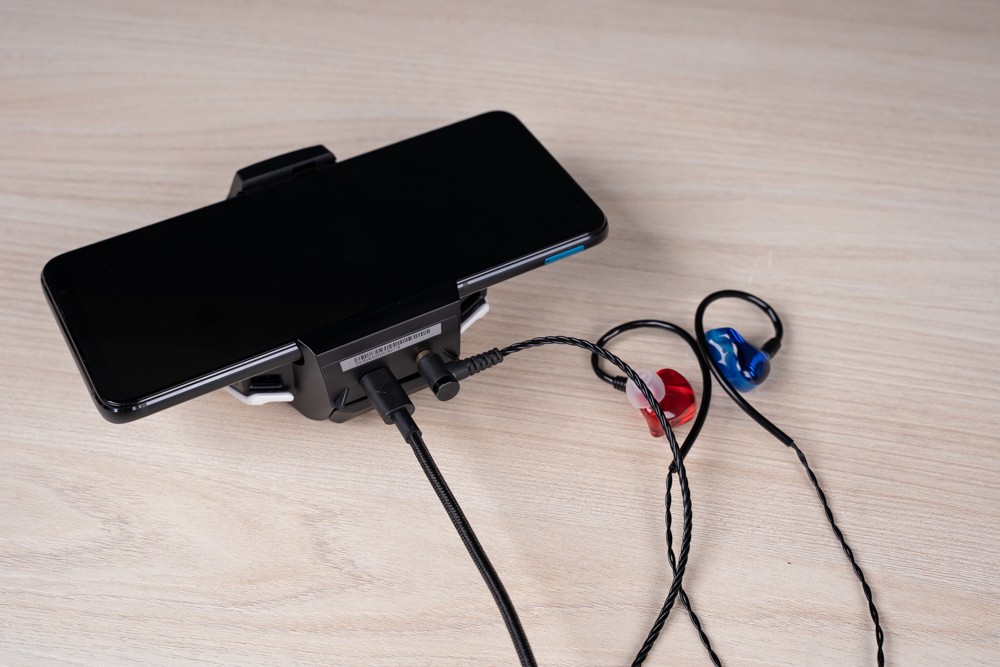
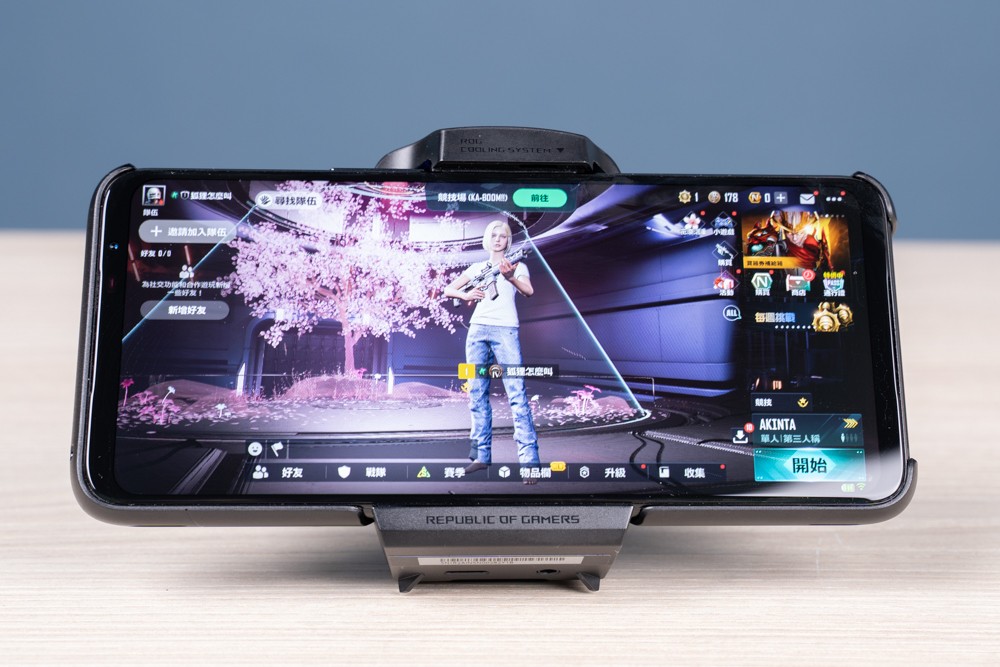
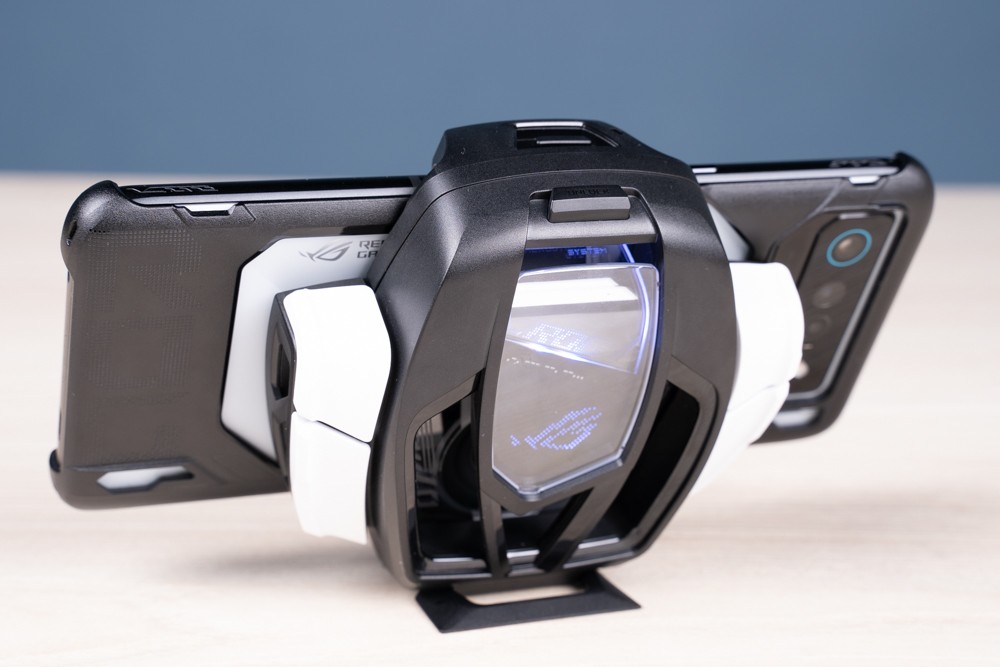
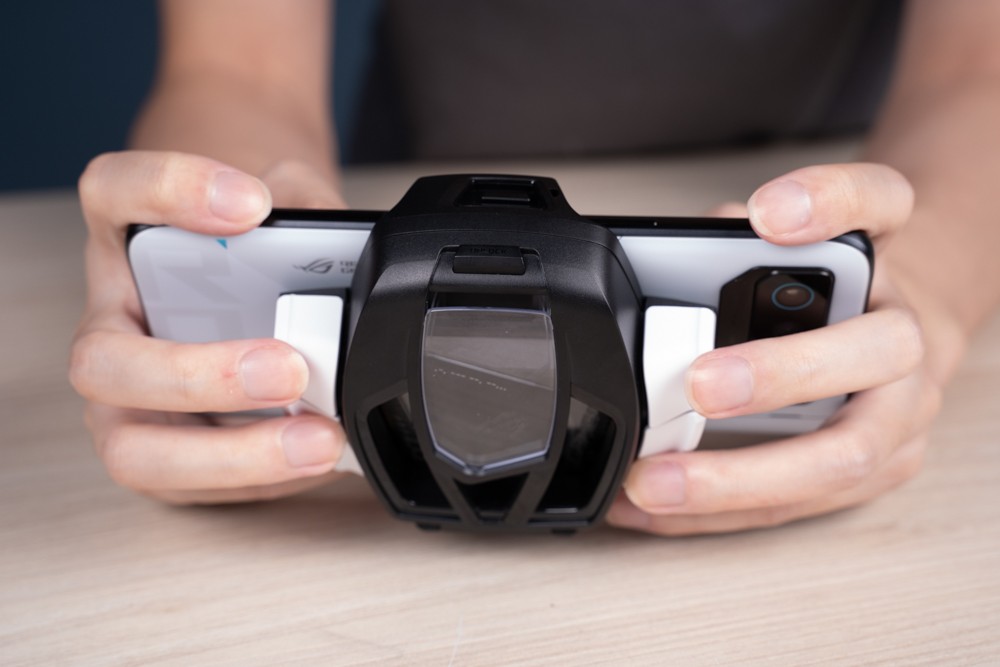
Performance tests were conducted using 3DMARK, PCMARK, and GeekBench 6. AnTuTu, a popular benchmarking tool, was not utilized as it was removed from Google Play due to security concerns.
Upon launching the mentioned benchmarking software, the system automatically activates the X mode. As most users would likely enable X mode while gaming, all tests were performed in this mode.
The 3DMARK WILD LIFE EXTREME benchmark, which represents game-based performance, scored 3763 points without using the fan, and 3783 points with the fan and freezing mode activated.
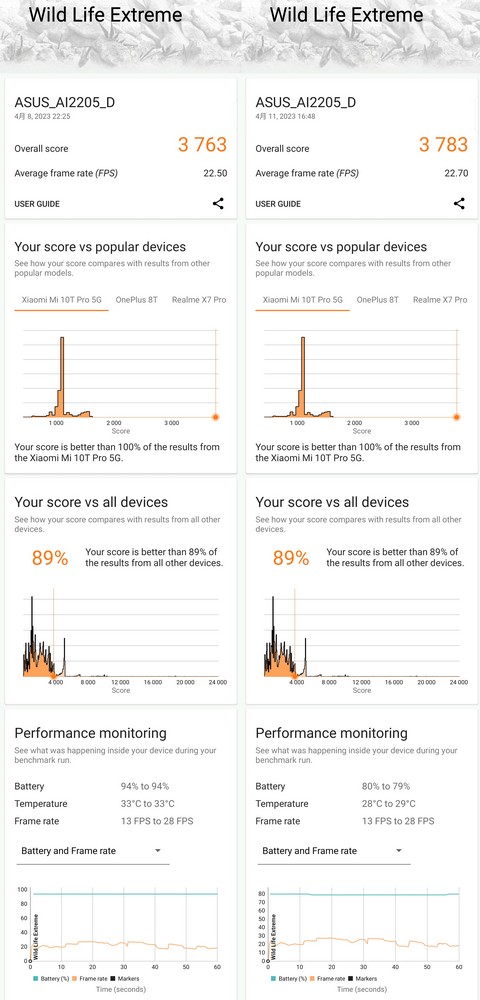
PCMARK, which evaluates performance in office tasks and daily usage, scored 18,422 points without using the fan, and 19,003 points with the fan and freezing mode enabled.
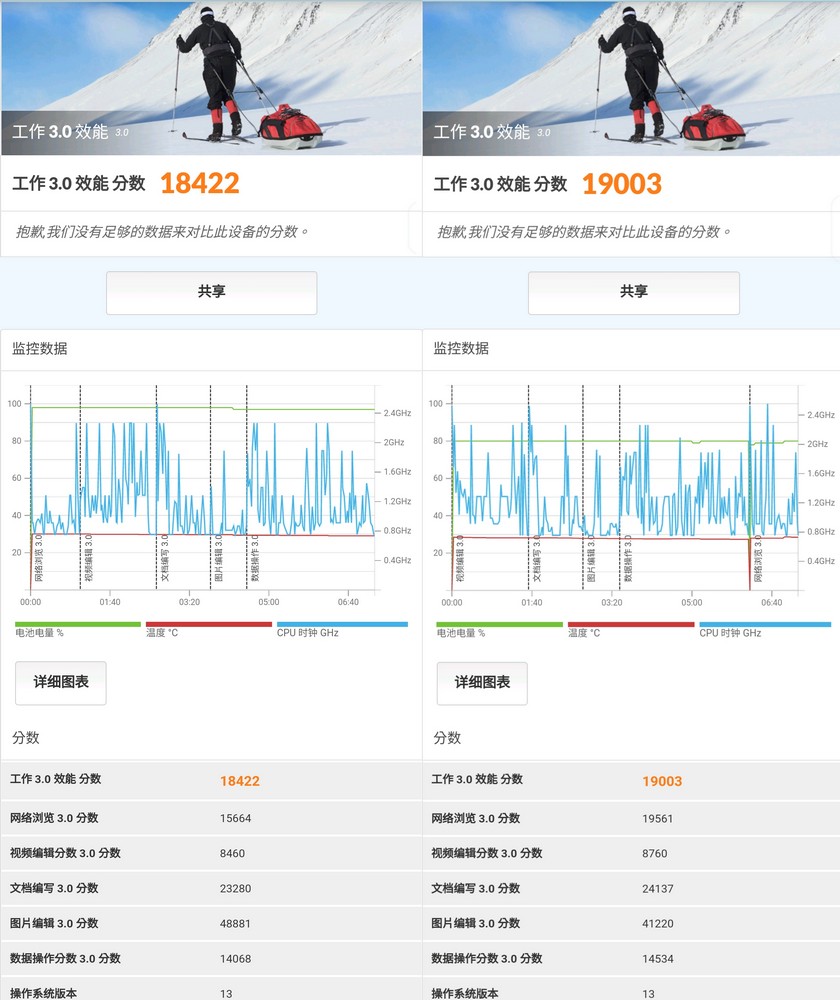
GeekBench 6 provides a test that more closely reflects the theoretical performance of the CPU. Without the fan, the single-core score is 2,010 and the multi-core score is 5,617. With the fan and freeze mode enabled, the single-core score is 1,995 and the multi-core score is 5,568.
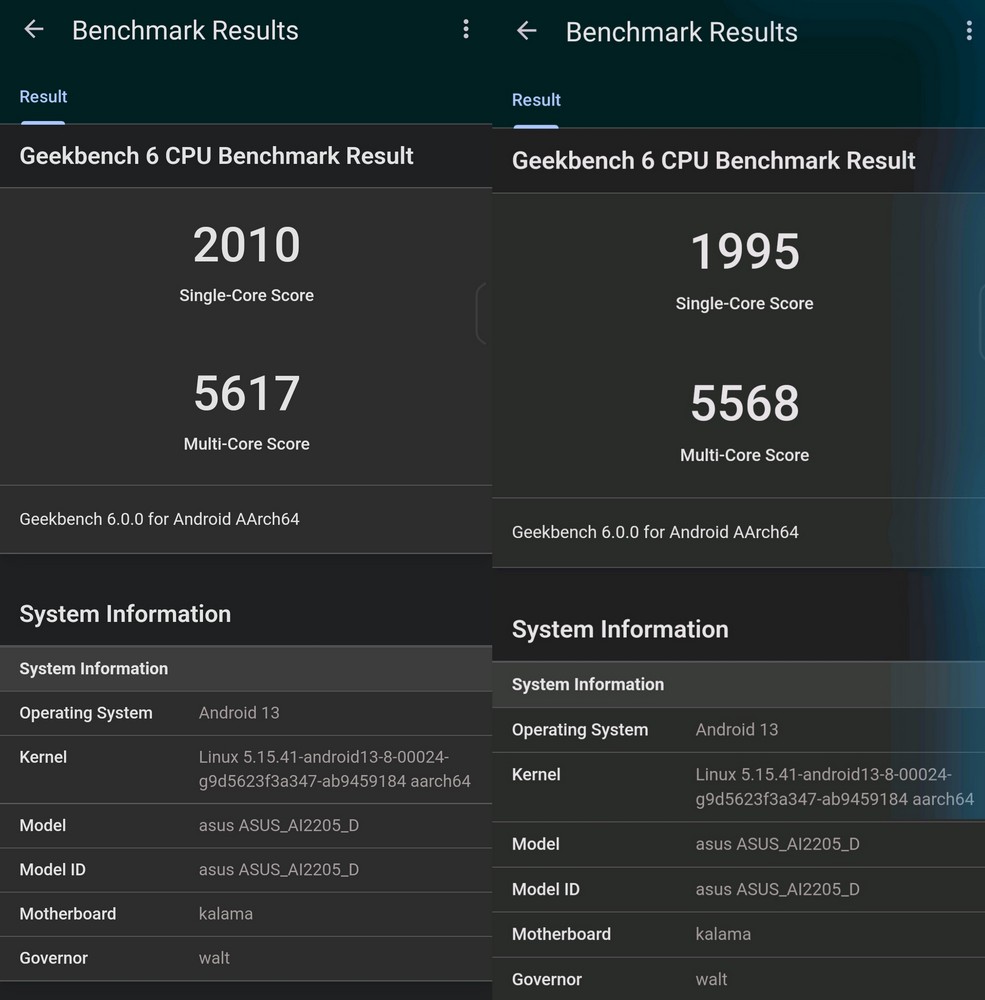
Based on the results of the three benchmark tests, there is no significant difference in the ROG Phone 7 Ultimate’s performance with or without the Aerodynamic Fan 7. As the benchmark test duration is relatively short, the CPU temperature does not rise too high. Next, we performed a 20-cycle 3DMARK WILD LIFE EXTREME stress test to evaluate its performance without the fan.
Surprisingly, the ROG Phone 7 Ultimate achieved 99.7% stability without using the fan, and its score was marginally higher than when using the freezing mode (likely within the margin of error). However, the CPU temperature reached 49 degrees Celsius without the fan, compared to just 39 degrees when the freezing mode was enabled. More notably, the phone became too hot to hold comfortably without the fan. This reveals that the real limitation lies in the human body’s tolerance for heat. Under normal gameplay, the device won’t heat up as much as it did during the test. It is recommended to use a fan for extended gaming sessions to keep both the phone and your hands cool (pun intended).
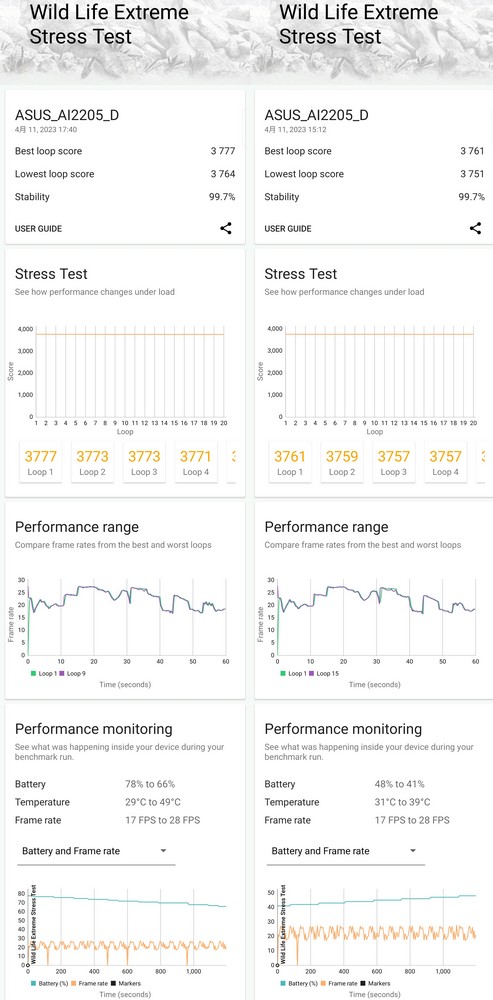
Actual camera measurement: Three cameras on the rear, IMX766 four-in-one camera
Although photography is not the primary focus of a gaming phone, the ROG Phone 7 Ultimate comes with all the necessary features. It is equipped with a 50-megapixel IMX766 main camera that uses Quad Bayer technology to combine four pixels into one, outputting 12.5 million pixels for improved low-light performance. Additionally, it has a 13-megapixel 125-degree ultra-wide-angle lens and a 5-megapixel macro lens. The front camera features a 32-megapixel OV32 sensor, also supporting Quad Bayer technology. The device can record videos at up to 8K 24fps or 4K 120fps.
Under well-lit conditions, the 2x optical zoom utilizes the 5-megapixel macro lens, while in low-light environments, the main lens is used for cropping, resulting in digital zoom. When shooting green plants, the wide-angle lens tends to produce more saturated colors compared to the other two lenses. However, this difference is less noticeable in other scenes.








Facial recognition + ultrasonic fingerprint unlocking, convenient and safe
The ROG Phone 7 Ultimate offers facial recognition and under-screen ultrasonic fingerprint recognition as security features. Facial recognition uses 2D image recognition, which may have slightly lower security but provides extremely fast unlocking speeds. The device typically unlocks automatically when picked up. The under-screen ultrasonic fingerprint recognition is highly accurate and secure, but the unlocking success rate with wet hands is relatively lower. Enabling both modes ensures easy unlocking in various situations.

Fever sound effect experience: 2.1-channel three-speaker/lossless Bluetooth sound effect
The ROG Phone 7’s speaker leaves a strong first impression with its clear sound and ample volume, outperforming some thin and light laptops. Additionally, the Aerodynamic Fan 7 can form 2.1 channels and produce extremely loud sound, though the sound quality is somewhat compromised.
For headphones, the device features Dirac Virtuo technology, delivering highly accurate and immersive sound effects. It supports 3.5mm, Type-C, and Bluetooth headphones. The 3.5mm headphone jack is Hi-Res compatible, while Bluetooth headphones support Qualcomm’s latest aptX lossless technology for 16-bit 44.1kHz CD sound quality or 24-bit 96kHz high-resolution audio (requires compatible headphones and audio sources).
In the settings, enabling the Sound Wizard allows customization of the equalizer according to personal preferences and offers various preset scenarios. When headphones are connected, the Dirac Spatial Audio option becomes available.
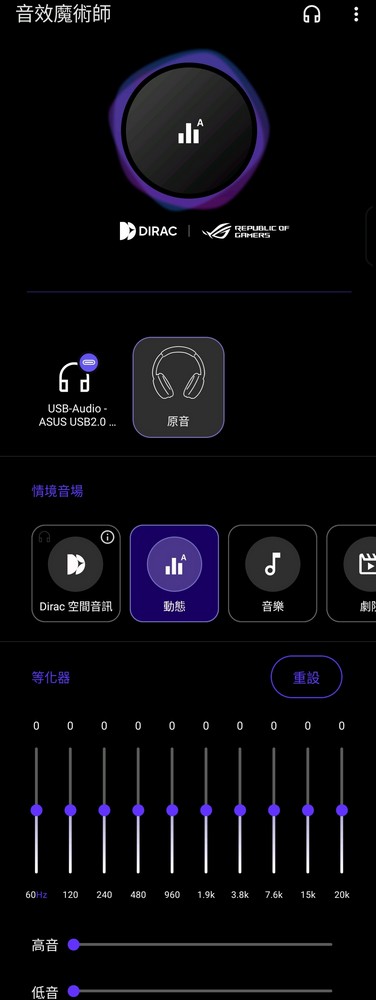
It’s natural to be curious about whether the two Type-C ports on the ROG Phone 7 Ultimate can be used simultaneously. It largely depends on the devices connected. For example, you can use one port for charging and the other for connecting an external DAC (Digital-to-Analog Converter) without any issues. However, the compatibility of using both ports with other devices will depend on the specific devices and their requirements. To determine if this works, you would need to test the device combinations yourself.
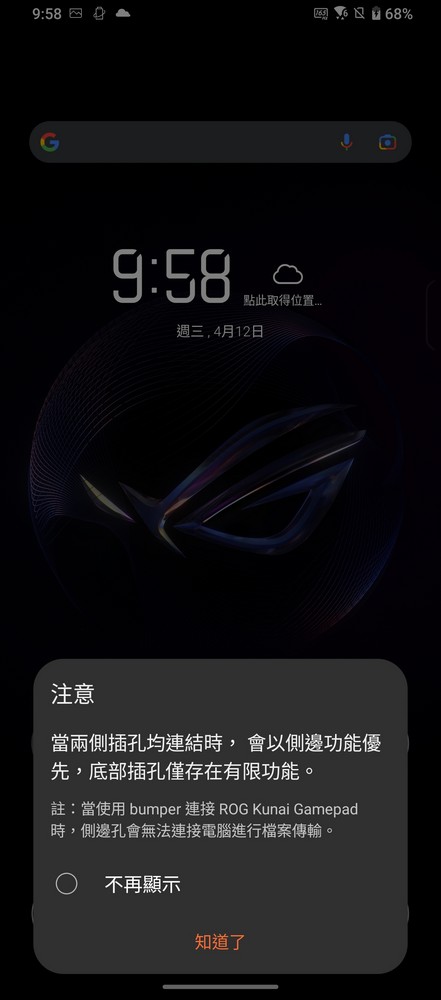
No worries when going out: 6000mAh large battery for long battery life / 65W fast charge
The ROG Phone 7 comes equipped with a large 6000mAh battery and 65W HyperCharge fast charging capability, though it requires the use of the included charger. The side Type-C port supports QC 5.0, PD3.0, and HyperCharge, while the bottom port supports QC 3.0 but not QC 5.0. However, for most chargers, it should not make much difference which port is used for charging. There is no wireless charging functionality, but given the large battery and fast charging capabilities, wireless charging may not be necessary. With regular usage, the battery life of the phone lasts for several charges, as reported by the reviewer.
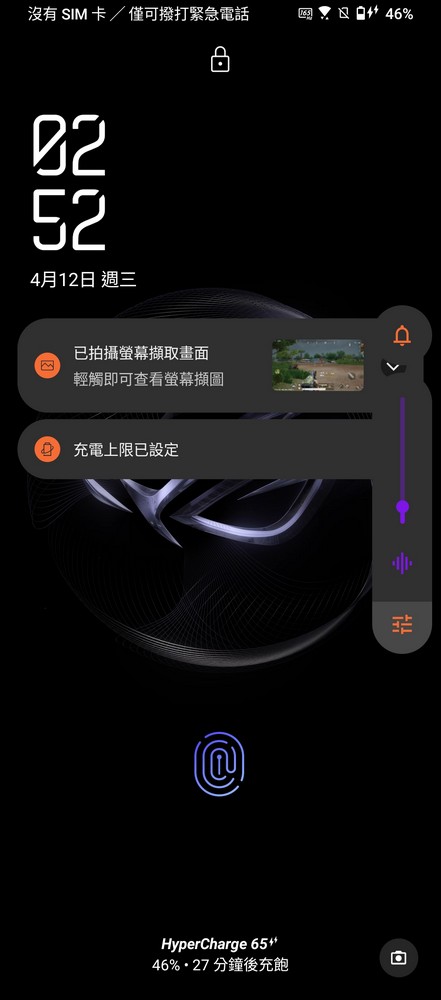
The ROG Phone 7 comes with battery protection features at the system level that can help extend the battery’s lifespan. Users can set a charging limit, enable gentle charging (slow charging), and schedule charging times. It’s recommended to set the charging limit at 80% to effectively prolong the battery’s overall lifespan.
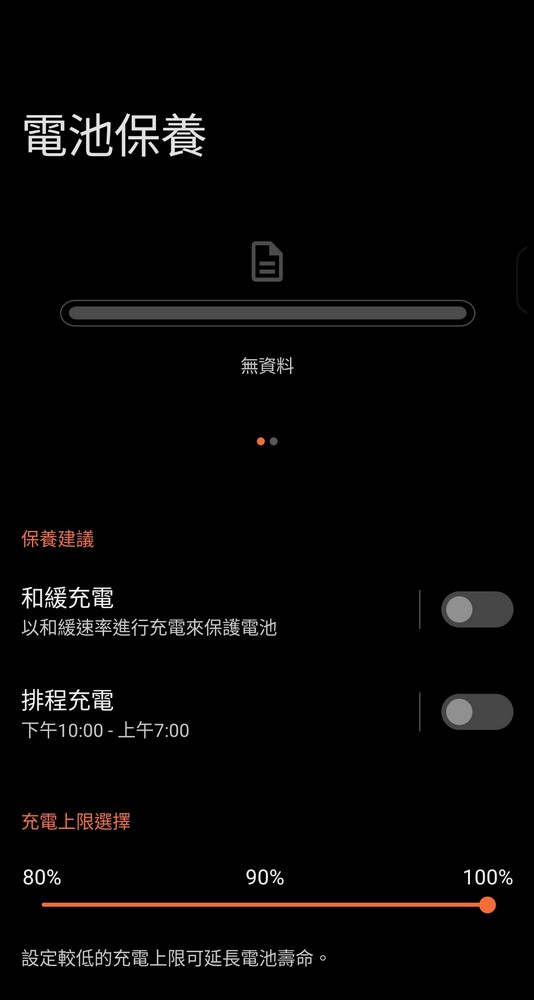
Game Control Center: X Mode Full Firepower/Friendly Gamer Experience
The game control center of the ROG Phone 7 can be accessed by pulling down the X mode menu from the top of the screen or by clicking on the Armory Crate app. From here, users can check the phone’s temperature, CPU and GPU frequencies, and other performance metrics. They can also switch between the three different battery strategies of X mode, dynamic performance, and long battery life. However, most games will automatically activate X mode upon startup, so there may not be a need to manually enable it.
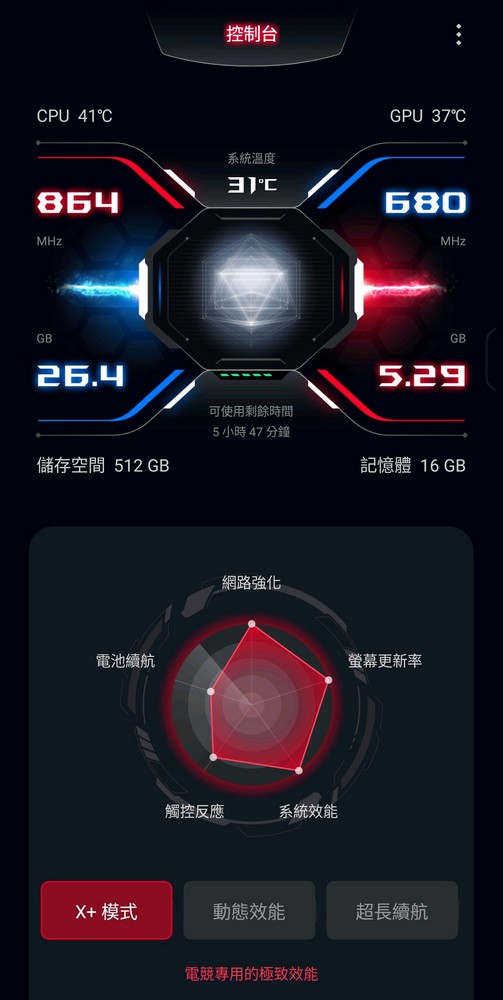
Armory Crate allows users to adjust the effects of the phantom screen and control related RGB lighting effects, such as the lighting effects and operation strategies of the aerodynamic fan.
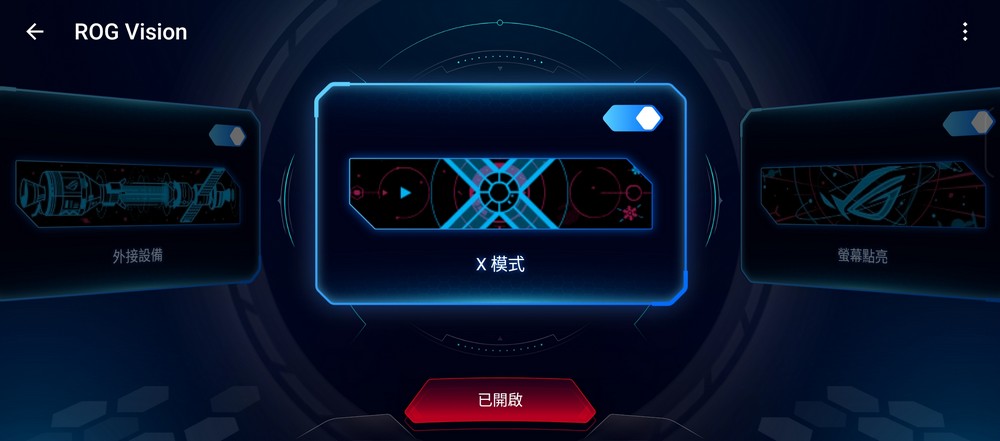
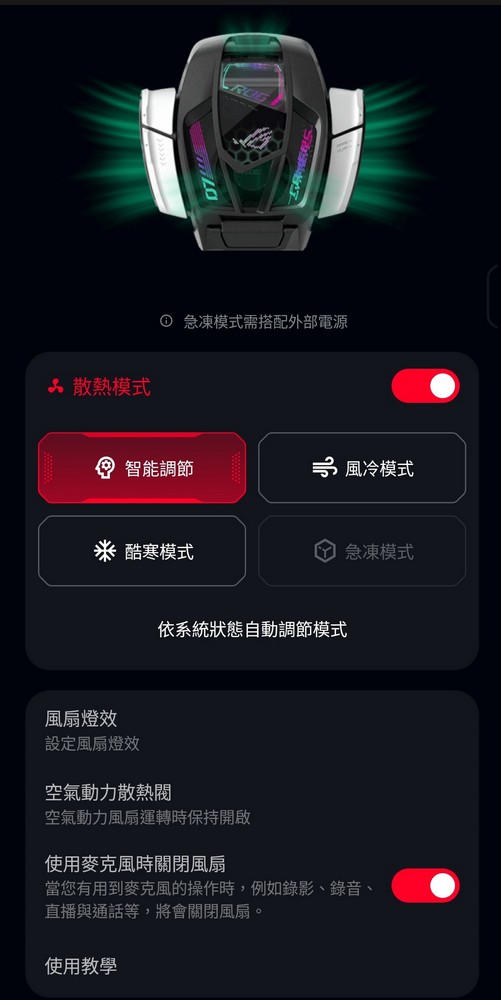
After entering a game, users can swipe from the upper left or upper right to the middle of the screen to access GAME GENIE, where they can find all the gaming-related functions and features.
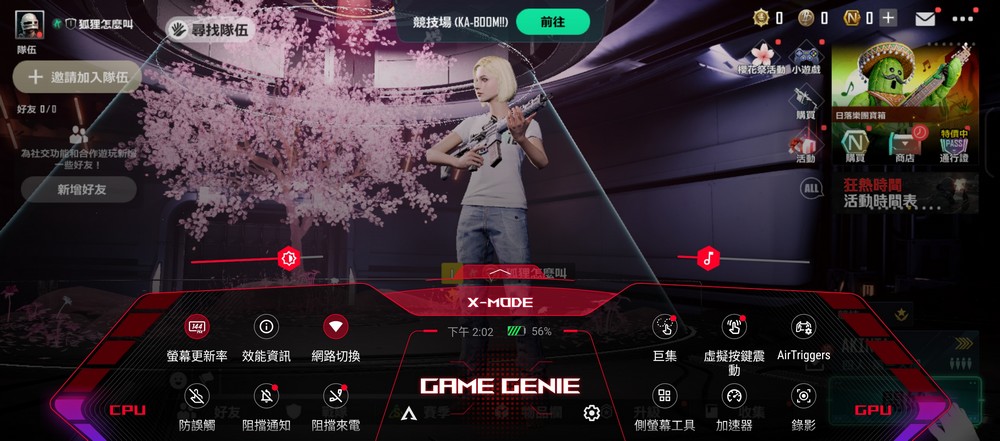
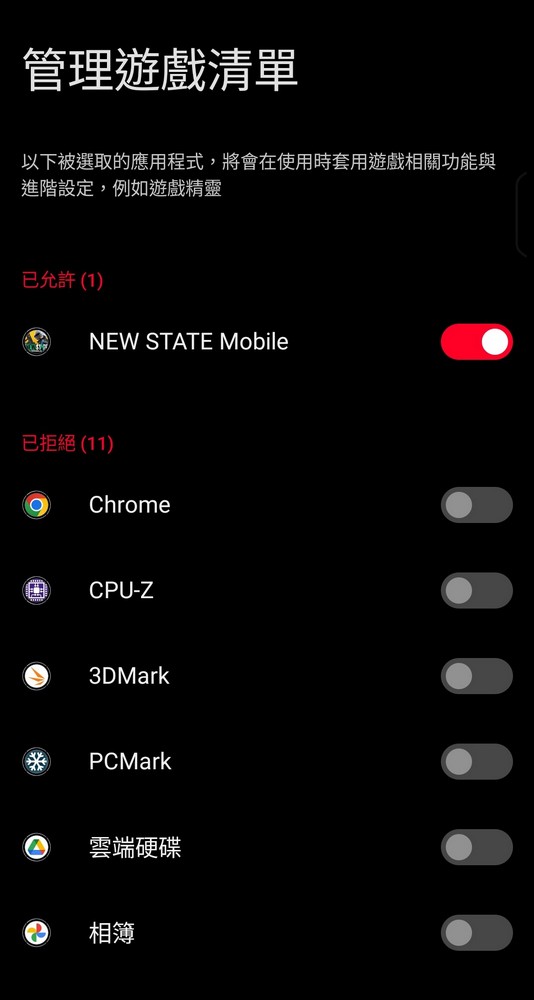
AirTrigger is a feature that has been available on ROG Phones since the first generation. It allows users to map virtual buttons onto the frame of the phone, making it particularly useful as a shooting button, hence the name AirTrigger. The four buttons on the aerodynamic fan can also be mapped as game keys.
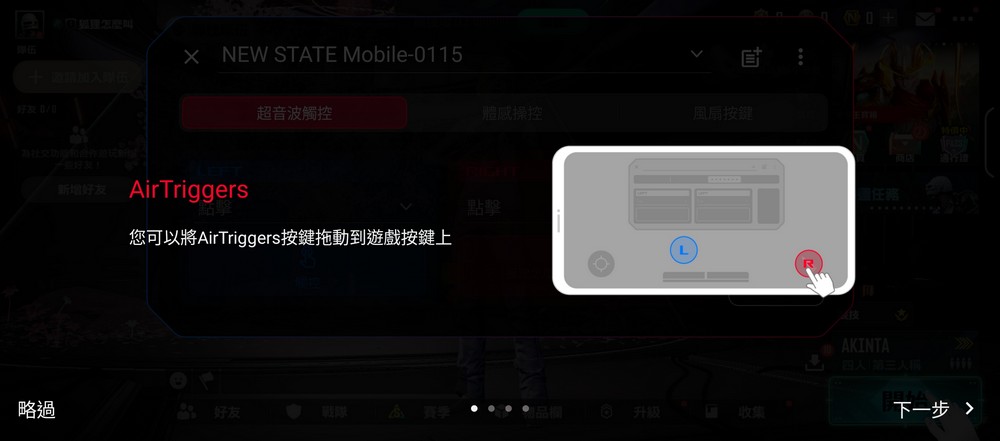
Summarize
Furthermore, the camera of ROG Phone 7 Ultimate also performed surprisingly well, with a 50-megapixel main camera that uses Quad Bayer technology to output 12.5 million pixels to improve low-light performance. The 13-megapixel ultra-wide-angle lens and 5-megapixel macro lens provide more options for photography. The phone also supports 8K 24fps or 4K 120fps video recording, which is impressive for a gaming phone.
Overall, ROG Phone 7 Ultimate is a well-designed gaming phone that caters to the needs of gamers with its powerful hardware, advanced heat dissipation system, and various gaming-centric features. At the same time, it also offers a high-quality display, excellent audio-visual performance, and capable cameras.
If this article is helpful for you, please share this article with your friends on social media. Thank you!
This article is based on the personality of the reviews. You are responsible for fact-checking if the contents are not facts or accurate.
Title: Unveiling the ROG Phone 7 Ultimate: The Supreme Ruler of Frosty Gaming